
The Most Famous Psilocybin Mushrooms
Magic mushrooms are mostly known for inducing psychedelic experiences, but did you know that there are actually benefits to ingesting psilocybin, the most abundant psychoactive substance in shrooms? There are plenty different types of magic mushrooms to choose from, each with its own range of effects. Get to know our most popular shrooms!
MAGIC MUSHROOMS AS A RECREATIONAL DRUG... AND MORE
Today’s pop culture has given magic mushrooms the reputation of a recreational drug more than anything else. However, recent studies have shown that psilocybin rendered positive results among subjects who used them. Particularly, it was found that over a period of use, individuals experienced greater compassion and empathy towards others.
MUSHROOMS ARE SAFE AND COME IN DIFFERENT VARIETIES
Like cannabis, magic mushrooms differ from other recreational drugs in that they are much safer. For one, shrooms are 100% natural, so you won’t have to worry about any synthetic additives as long as you know where your mushrooms came from. As for the different types of magic mushrooms, experts have discovered hundreds of different species. If you are thinking of purchasing a magic mushroom grow kit for yourself, you might find the vast selection a bit overwhelming. For this purpose, Zamnesia has compiled a list of the most popular varieties.
Psilocybe Cubensis
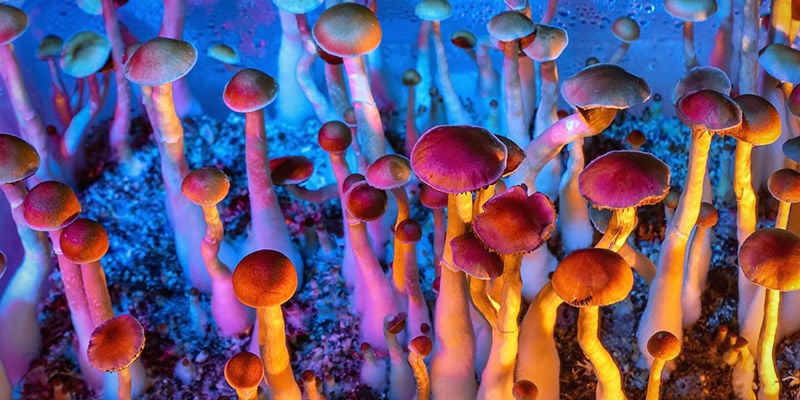
Common Names: “Earle”, “Singer”
Located in Central America, Mexico, and the Gulf Coast region of the United States, this mushroom grows individually or in groups on dung and manure and is found primarily in cattle pastures. It can grow roughly 20 cm in height with its broad yellowish stalk caped with the dirt yellow-brownish top. The cap can grow roughly 10 cm broad and is in an oval shape. The stalk is about 4-15 cm long and about .4-1.5 cm thick. Psilocybe Cubensis often grows thicker and has a dry, white or yellowish color. The stalk grows smoothly into the thick-walled spore housing a dark purple-brown print about 11-17 by 7-12 microns. The spore prints are smooth and elliptical. Its gills are lined with whitish edges, following a deep purple to black color.The mushroom is hallucinogenic and can be very dangerous if consumed in a large quantity. It does not pose the risk of an overdose, but the effects can be unpleasant, lengthy, and strong.
Psilocybe Azurescens
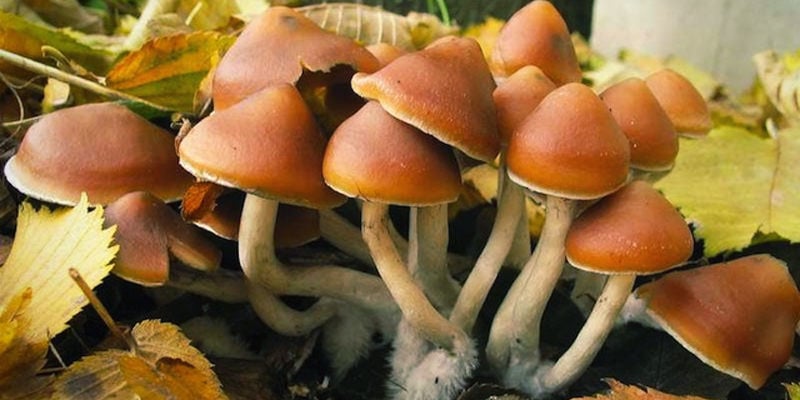
Common Names: “Stamets”, “Gartz”
This mushroom can grow from the southern Santa Cruz, California, which tends to be a rare occurrence. It is most common in the Astoria, Oregon area, but has spread more do to outdoor cultivation. The mushroom grows roughly 90-200 mm long and averages about 3-6 mm thick in the stipe. Its grayish stipe leads into the pale brown pileus. The pileus is between 30-100 mm in diameter and grows in a convex which eventually flattens into a smooth state with age. The Psilocybe Azurescens grows on deciduous wood-chips or in sandy soils rich in lignicolous debris. This mushroom causes the whitening of wood. Fruiting of this species begins late in September until frigid temperatures, usually mid to late November. This mushroom boasts a very bitter taste.
Psilocybe Cyanescens
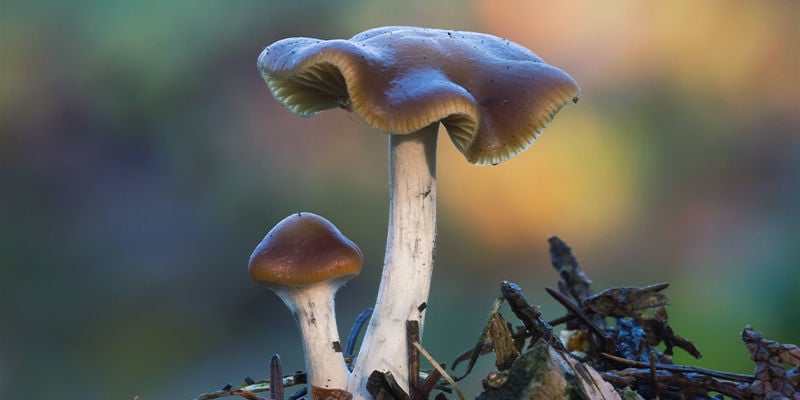
Common Names: “Wakefield”, “Wavy Cap”, “Cyan”, “Blue Halo”
These mushrooms grow in small pacts. Their light-yellowish to white stipe grows 3-6 cm tall into a fading brown cap. The cap grows into a wavy but flat plane which sometimes upturns with age. The cap is thing and becomes brittle with age. The stipe is about 3-6 cm thick and is usually enlarged at the base. Its silky smooth white surface bruises blue but is superiorly hairy. The top of the mushroom boasts a purple-brown spore prints. The spores are close when young but expand with age. The caps are cinnamon brown but darken with age and are mottled from the spores when aged. They are cinnamon brown but darken with age and are mottled from the spores when aged. They have been found in England in patches containing over 100,000 mushrooms as well as in the Pacific Northwest. It has also been identified in New Zealand and west Asia. They fruit in cooler temperatures between 50-65 degrees, which generally occurs in the fall. The mushrooms contain mild psychoactive ingredients but are not found to be harmful in adults. Some institutions may use them through parboiling to remove the psychoactive effect, but many people find the taste too bitter for consumption.
Psilocybe Mexicana
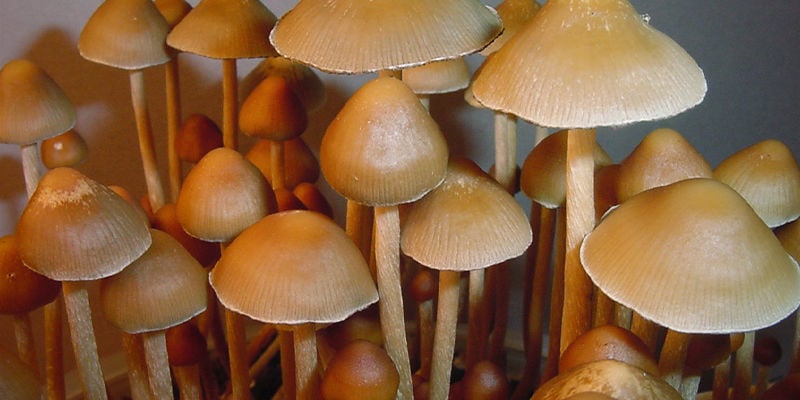
Common Names: “R. Heim”, “Angelito”, “Chamaquillo (Little boy in Spanish)”
This mushroom grows very small with a cap ranging between .5-2 cm and about .4-1.9 cm tall. Its thin stalk is a dark greenish-brown color into the belle shaped light to dark purple cap. The spore is a dark purple-brown color. This mushroom is generally found over 4000 feet above sea level from southern Mexico to Guatemala. It is found abundantly in limestone regions. The species can be found sprinkled independently amongst roadsides, trails, cornfields, and humid areas. It is also found in some deciduous forests. They do not grow in pacts. Fruiting begins in May and usually lasts until around October. The Mexicana does boast psychoactive effects and was used recreational as well as during religious ceremonies in the Aztec communities.
Psilocybe Tampanensis
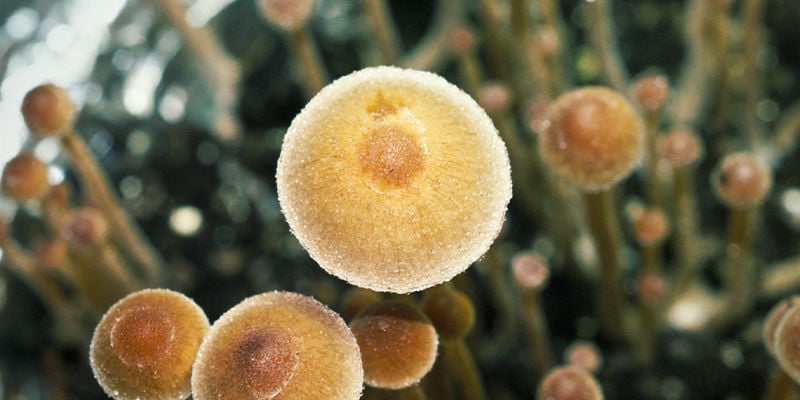
Common Names: “Philosopher’s Stones”
Psilocybe Tampanensis originally grew in the Tampa Florida area in 1977, but has since only been found in the Mississippi. The specimen found in Florida was cloned and its descendants remain in wide circulation. It has a thin brownish stem about 6 cm long which lightens in color toward the cap. Its cap is an umbrella-like shape which is dark brownish-purple color that expands to about1-2.4 cm in diameter. It boasts a smooth surface which can become slightly sticky when moistened. It leaves behind a purple-brown spore print. This mushroom is sought after thanks to it’s mild to highly psychoactive effect, hence its nickname. This mushroom is extremely rare and its whereabouts is not with certainty. Some reports of its locations are in sandy soils found within the meadows of Mississippi.
Psilocybe Atlantis
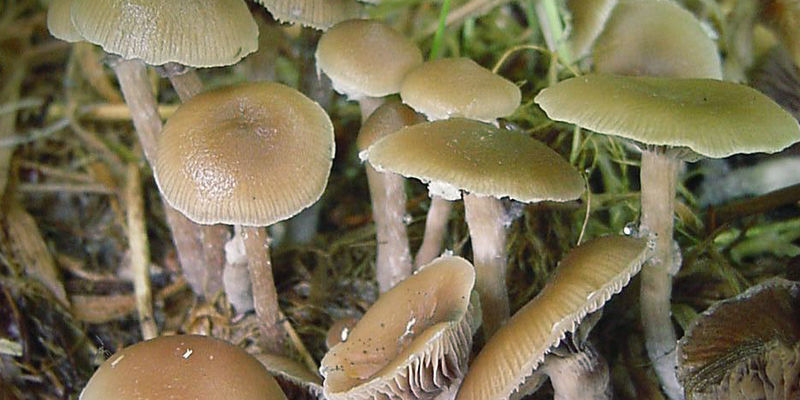
This mushroom has a brownish stipe which is about 5 cm tall and 3 cm thick. It has scales prominently toward the bottom of the stipe and grows into a 4 cm cap. The cap is smooth with a reddish brown surface and the entire mushroom bruises blue where damaged. The only record of this mushroom is found in grassy lawns and vacant lots in Fulton County, Georgia, with small reports in forested areas inhabited by farm animals in Central Arkansas. The fruiting is generally in cooler temperatures like the fall. It is named after its location which is near Atlanta, Georgia.
Panaeolus Cyanescens
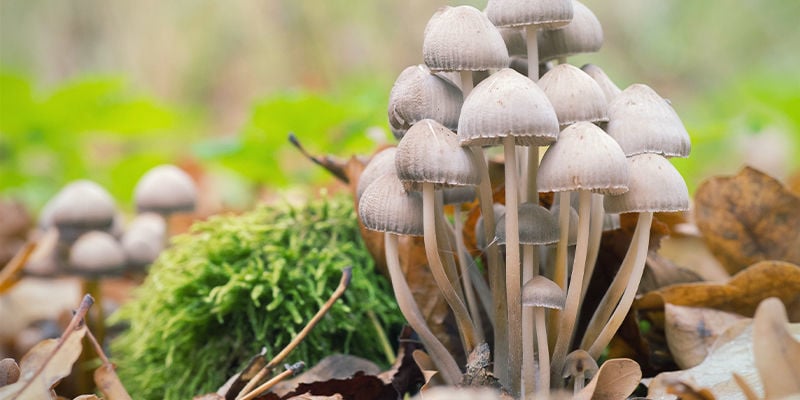
Common names: "The Hawaiian"
This mushroom grows tall in a silky white color. The stipe grows 7-12 cm tall into a 15.-4 cm cap. It is a very dry and often cracks in dry weather. The Panaeolus Cyanescens originates as a light brown color and grows gray to white with age, sometimes with a yellowish hue. Its spores are smooth and jet black. This species grows in both hemispheres in tropical and Neotropical areas. It has been found in Hawaii, Africa, Australia, England, Asia, South America, as well as Southern United States. Its edibility does have a psychoactive effect.
Psilocybe Semilanceata
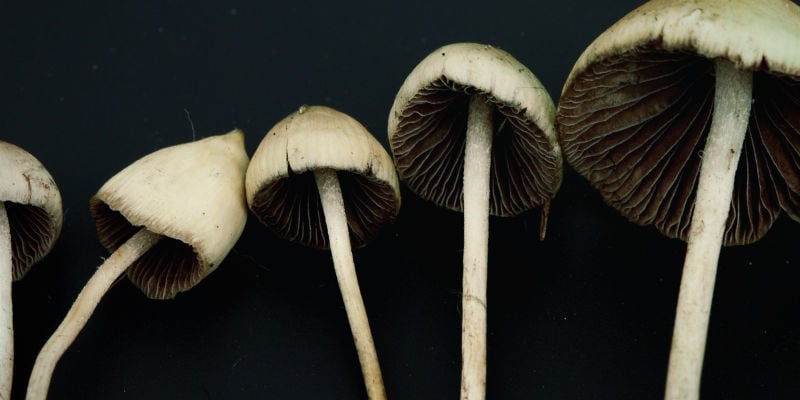
Common names: “Liberty Cap”
Psilocybe semilanceata ranks as one of the most potent psilocybin-containing mushrooms. Laboratory analysis has confirmed psilocybin levels as high as 2.37% by dry weight. These mushrooms also contain the alkaloid baeocystin—an analogue of psilocybin—at levels of around 0.36%. This species dwells in grassland habitats and appears abundantly in wetter areas that receive frequent rainfall. Liberty cap foragers frequently report large harvests on south-facing slopes that are fertilised by grazing livestock such as cows and sheep. Although associated with dung, Psilocybe semilanceata doesn’t grow directly on excrement. Instead, it’s a saprophytic species that breaks down dead grass roots. Key identification features include sharply conical to bell-shaped caps 5–30mm in diameter, pale brown to purple-brown gills with a narrowly adnexed to almost-free attachment to the stipe, and a red to purple-brown spore print.
Journey wisely
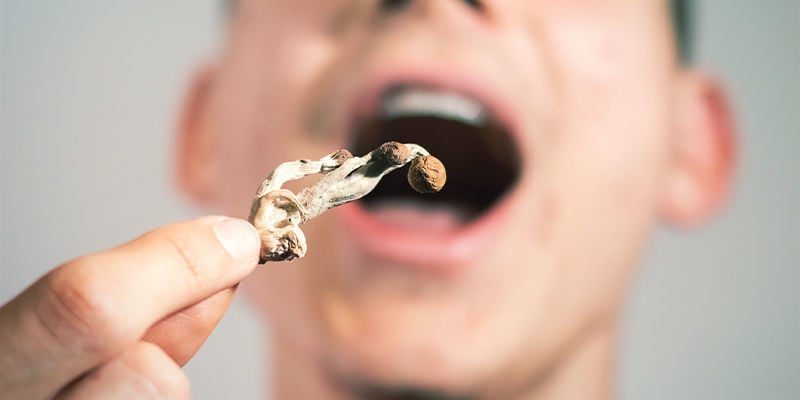
The species mentioned above are by far the most revered and widely consumed when it comes to psilocybin mushrooms. Although many psychonauts report positive life changes associated with these fungi, psilocybin mushrooms are powerful substances and easy to underestimate. If you're new to all things psychedelic, we suggest going low and slow. Consider exploring the world of microdosing, and use the Zamnesia mushroom dosage calculator to find a good starting dose. Once you're ready to increase the amount, you can use this calculator once again to progress with confidence.
-
 6 min
2 May 2025
How to prepare for a safe psychedelic trip
Psychedelic experiences benefit from knowledgeable and careful planning. It doesn't need to be over-the-top, but a little prep can make a trip absolutely wonderful. Find out how to prepare for a...
6 min
2 May 2025
How to prepare for a safe psychedelic trip
Psychedelic experiences benefit from knowledgeable and careful planning. It doesn't need to be over-the-top, but a little prep can make a trip absolutely wonderful. Find out how to prepare for a...
-
 4 min
17 January 2025
Psilocybin vs Psilocin: what’s the difference?
Magic mushrooms contain both psilocin and psilocybin. But what's the difference between these two compounds, and how do they each affect humans? Read along as we offer a primer on the two main...
4 min
17 January 2025
Psilocybin vs Psilocin: what’s the difference?
Magic mushrooms contain both psilocin and psilocybin. But what's the difference between these two compounds, and how do they each affect humans? Read along as we offer a primer on the two main...
-
 4 min
13 January 2025
How many types of magic mushrooms exist?
There are hundreds, if not thousands, of magic mushroom species, spanning multiple genera. Now, we can't name them all here—they may not all have even been discovered—but we can explore some of the...
4 min
13 January 2025
How many types of magic mushrooms exist?
There are hundreds, if not thousands, of magic mushroom species, spanning multiple genera. Now, we can't name them all here—they may not all have even been discovered—but we can explore some of the...
-
 3 min
17 August 2020
5 Surprising Benefits of Magic Mushrooms
There are so many factors to consider when taking magic mushrooms, and it can be daunting overall. However, there are many benefits to taking this psilocybin-packed hallucinogen. Continue reading...
3 min
17 August 2020
5 Surprising Benefits of Magic Mushrooms
There are so many factors to consider when taking magic mushrooms, and it can be daunting overall. However, there are many benefits to taking this psilocybin-packed hallucinogen. Continue reading...
-
 3 min
29 October 2019
Magic Mushrooms Are The Safest Drug
A psilocybin trip can be fun and enlightening, but just how safe is it to trip on magic mushrooms? In this article, we’ll take a deep dive into the world of magic mushrooms, and show you just how...
3 min
29 October 2019
Magic Mushrooms Are The Safest Drug
A psilocybin trip can be fun and enlightening, but just how safe is it to trip on magic mushrooms? In this article, we’ll take a deep dive into the world of magic mushrooms, and show you just how...
-
 4 min
24 November 2017
How To Identify Different Types Of Magic Mushrooms
Looking for help identifying your favourite magic mushrooms? In this article, we take a look at the most common types of shrooms that you can encounter.
4 min
24 November 2017
How To Identify Different Types Of Magic Mushrooms
Looking for help identifying your favourite magic mushrooms? In this article, we take a look at the most common types of shrooms that you can encounter.





 United States
United States











